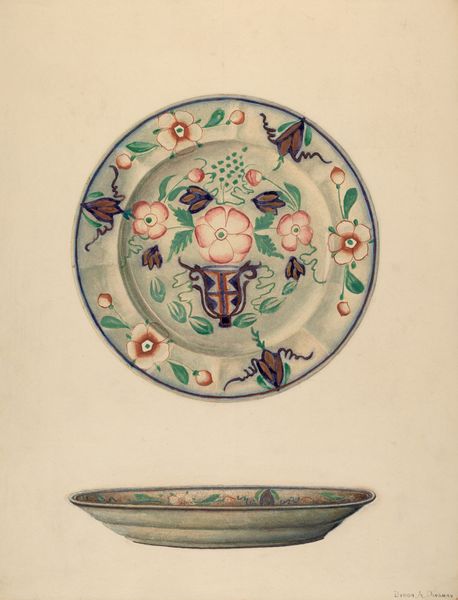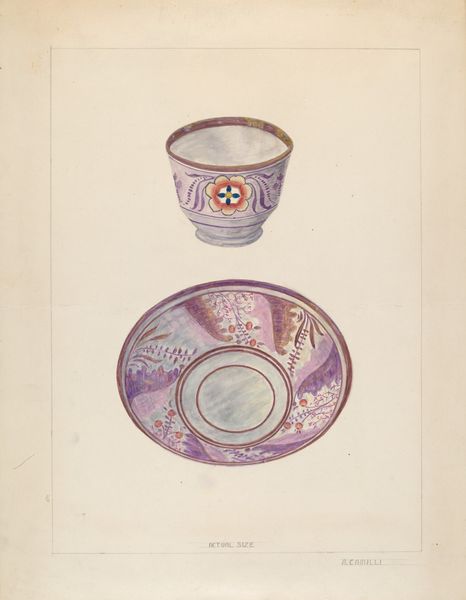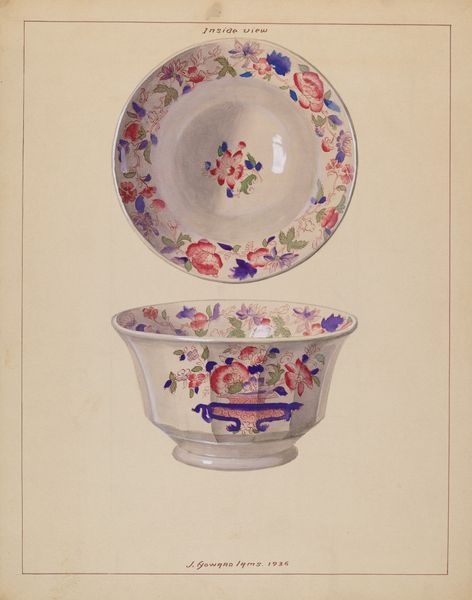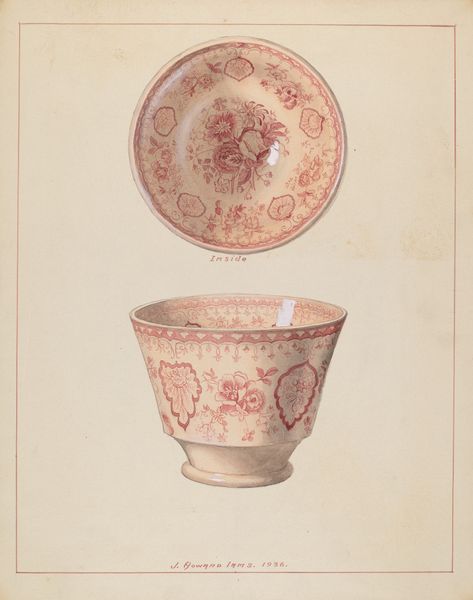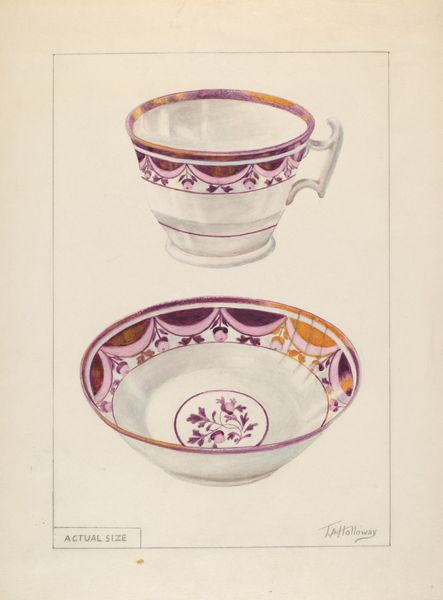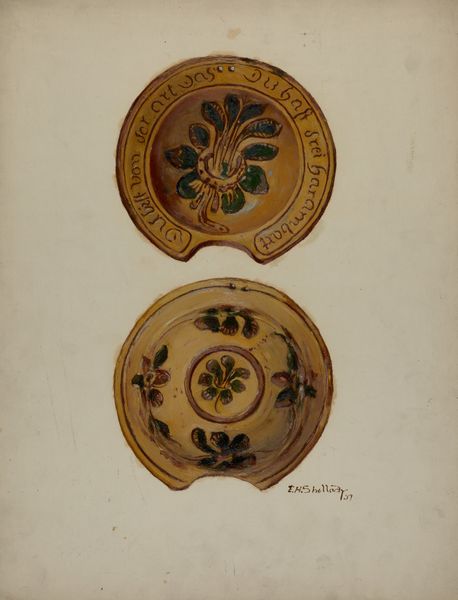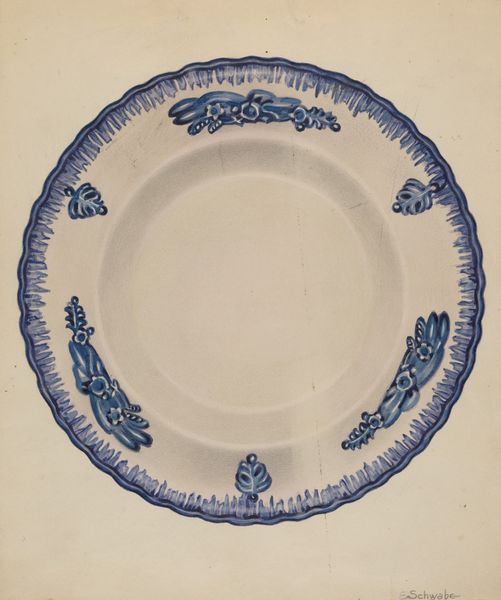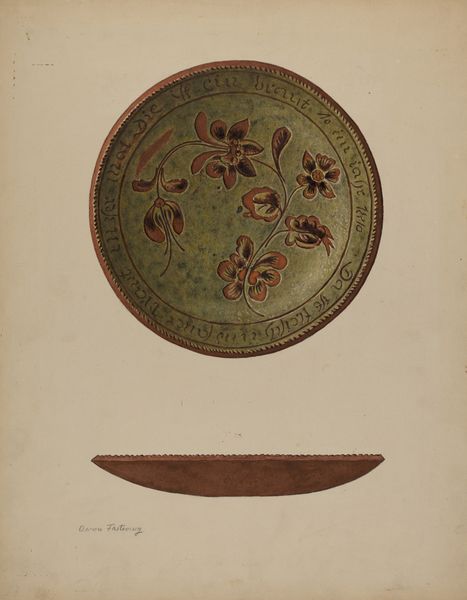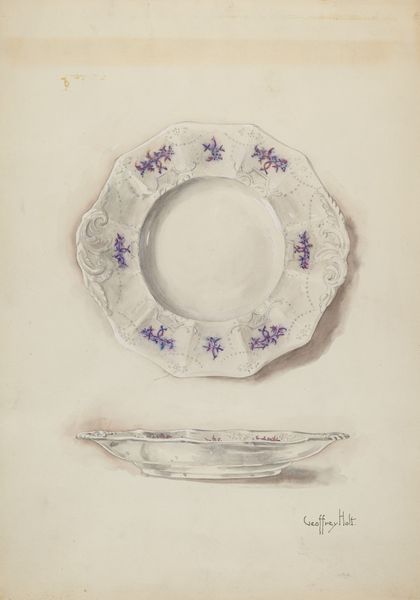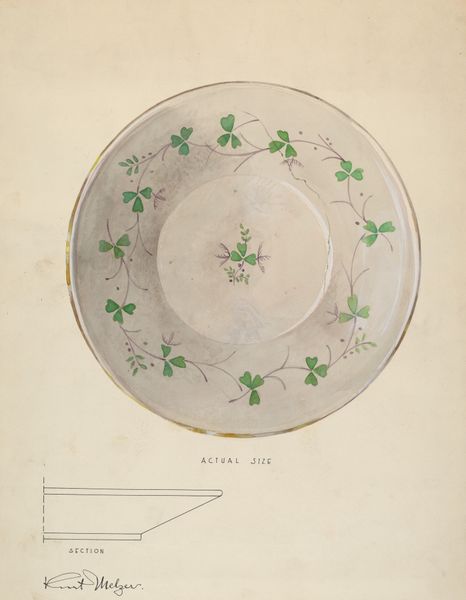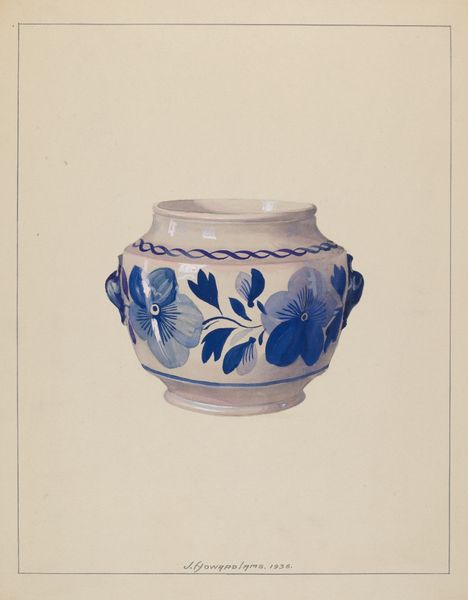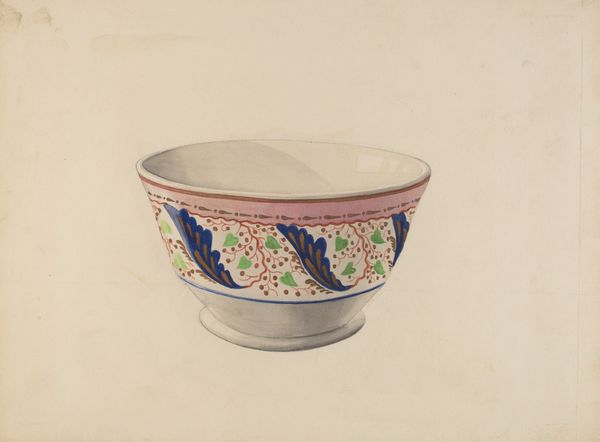
drawing, ceramic, watercolor
#
drawing
#
ceramic
#
watercolor
#
ceramic
#
academic-art
#
watercolor
Dimensions: overall: 29.7 x 22.1 cm (11 11/16 x 8 11/16 in.)
Copyright: National Gallery of Art: CC0 1.0
Curator: Frances Lichten's watercolor and ceramic work, "Fruit Basket," created around 1936, presents two delicate, matching porcelain pieces. The filigree pattern against the simple blue and white immediately catches my eye. What's your take on it? Editor: Well, my initial reaction is one of subdued elegance. The pale palette gives it a serene quality. But the rendering, while delicate, feels somewhat confined to a tradition of idealized domesticity. I can't help but wonder about the absence of actual fruit, right? The emptiness speaks volumes, almost like a comment on aspiration versus reality during that era. Curator: Absolutely, I think we're both drawn to the implied narrative, despite Lichten’s deceptively simple style. Looking closer, note the symmetry—it’s all incredibly poised, a reflection perhaps of rigid social conventions women artists navigated at that time. Consider also how ceramics became a particularly powerful medium in the Arts and Crafts movement as they are considered a lesser "craft." Editor: Indeed. Visually, that central rose on the plate commands attention. It's not just decorative. It is deeply symbolic of love, beauty, and perhaps the fleeting nature of youth and domestic contentment—aspirational emblems, loaded with significance given shifting gender roles and economic anxieties in the 1930s. But there is also this odd empty center. The lack of a concrete center almost creates some tension between feminine ideals and this quiet defiance. Curator: Precisely, the void is crucial. Perhaps it suggests a yearning, or even a subtle rebellion against these restrictive ideals? The empty containers encourage the viewer to fill that space, to project. We see the rise in the woman’s sphere but with a sense of emptiness; so we come to the larger discussion of women in history and art history in particular. Editor: It's amazing how a seemingly straightforward still life reveals these rich, multi-layered readings. These deceptively quiet objects hold so many voices from the past and resonate strongly with today's conversations around gender and artistic expression. Curator: Agreed. A quiet rebellion perhaps—delicate but piercing—as Lichten places woman’s roles within ceramic art history, within broader social constructs. Editor: A perfect encapsulation. There is a lingering melancholy that ultimately transforms how we look back.
Comments
No comments
Be the first to comment and join the conversation on the ultimate creative platform.
